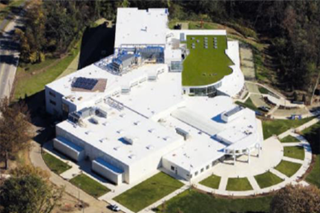
When sunlight hits a roof, some of it is absorbed by the roof, and some of it is reflected. A traditional dark-coloured roof absorbs the solar energy strongly and heats up, and a portion of that heat is transmitted into the building. A cool roof has a white or special cool colour that absorbs less sunlight, staying cooler in the sun and transmitting less heat into a building. This reduces the need for air conditioning in the building: in a hot climate, a cool roof can reduce air conditioning energy use by as much as 15%. For buildings without air conditioning, a cool roof can improve comfort and prevent the need to install an air conditioning system.
In addition to their energy benefits, cool roofs can mitigate the urban heat island effect. This can keep cities cool, reducing pollution and improving urban comfort. Studies also show that cool roofs may offset the effects of as much as 44 gigatonnes of carbon dioxide in the atmosphere, which could slow global warming. Listed here are several cool roofs resources that might interest policymakers.
Fact Sheets and Manuals
- Cool Roof Fact Sheet (U.S. Department of Energy)
- White Roofs Cool the World, Offset CO2, Delay Global Warming (Lawrence Berkeley National Laboratory
- Global Cooling: Increasing Worldwide Urban Albedos to Offset CO2 (Lawrence Berkeley National Laboratory, California Energy Commission)
- Guidelines for Selecting Cool Roofs (U.S. Department of Energy)
- Cool and Green Roofing Manual (New York City)
Websites, Reports and Other Tools
- Global Cool Cities Alliance
- Cool Roof Calculator (Oak Ridge National Laboratory, Lawrence Berkeley National Laboratory)
- Cool Science (Urban Heat Islands (Lawrence Berkeley National Laboratory
